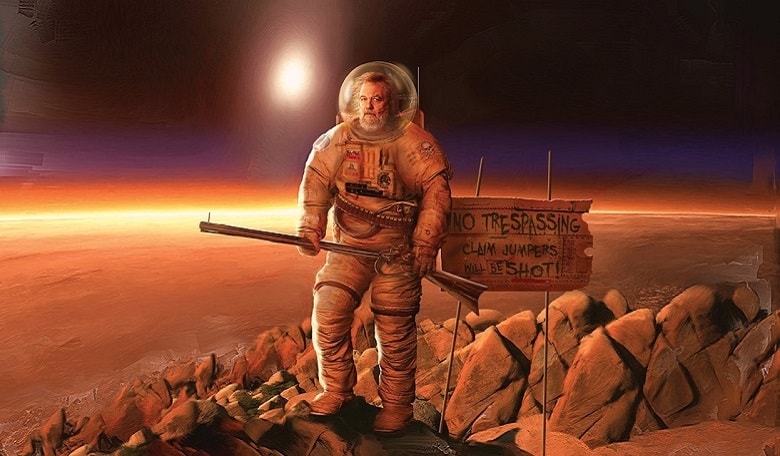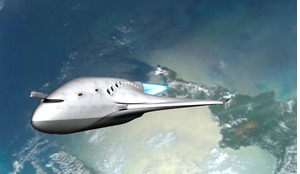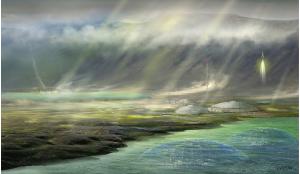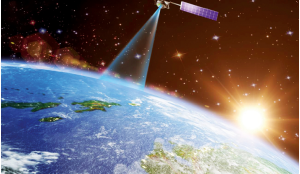In November 2015 the United States, passed the US Commercial Space Launch Competitiveness Act (HR 2262), which includes Title IV - ‘Space Resource Exploration and Utilization’. Section 402 adds Section 51303 to the US space law code.
A United States citizen engaged in commercial recovery of an asteroid resource or a space resource under this chapter shall be entitled to possess, own, transport, use and sell the asteroid resource or space resource obtained in accordance with applicable law, including the international obligations of the United States.
In February this year the government of Luxembourg announced an initiative to establish domestic laws and regulations to facilitate asteroid mining. [3] The announcement further signalled that Luxembourg was interested in directly investing in asteroid mining companies. Luxembourg hopes to attract asteroid mining companies to establish a presence there. [4]
Nonetheless, these actions do not settle the larger question of whether asteroid (or lunar) resource acquisition is consistent with international law. This article endeavours to answer that question.
International regime
Even before humans left the surface of Earth, lawyers and politicians worried about what, and whose, laws would apply to outer space. [5] There was wide agreement that outer space was most analogous to the high seas; a place where many travelled but no one owned. But what of the celestial bodies that populate space - the Moon, the planets, the asteroids and comets? Would these new lands be subject to appropriation and claim by national explorers? Early international legal scholars strove to focus debate on these issues before widespread development of outer space could establish customary international legal precedent that carried national conflicts into space. [6]
Even before humans left the surface of Earth, lawyers and politicians worried about what, and whose, laws would apply to outer space
This was especially true concerning the militarisation of space, since the same vehicles which were being developed to loft probes into space in the mid-1950s were also designed to lob nuclear weapons at other nations.
From this debate emerged the 1967 Outer Space Treaty (OST) [7] which remains the cornerstone of international space law. The starting point of this discussion is Article II:
Outer space, including the moon and other celestial bodies, is not subject to national appropriation by claim of sovereignty, by means of use or occupation, or by any other means.
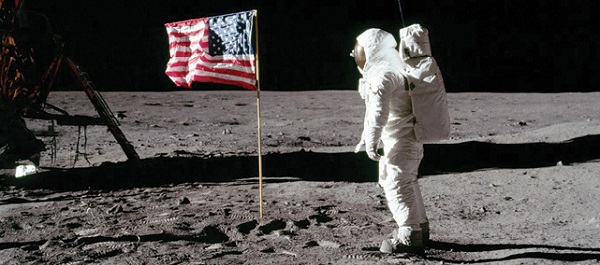 The Apollo Moon landings brought back 842 pounds of lunar material under strict NASA control NASA claims that the samples are ‘a limited national resource and a future heritage’ and so far less than 10 per cent of the total has been subjected to any experimentation
The Apollo Moon landings brought back 842 pounds of lunar material under strict NASA control NASA claims that the samples are ‘a limited national resource and a future heritage’ and so far less than 10 per cent of the total has been subjected to any experimentation
Contrary to what some commentators claim, there is no ‘loophole’ that allows individuals to claim ownership of celestial bodies because Article II only addresses nations. [8] The inclusion of the term ‘by any other means’ at the end of Article II precludes an ‘end around’ whereby citizens of nations may make real property claims in outer space, while nations may not. [9]
Moreover, Article VI, discussed in more depth below, makes clear that individuals cannot make claims to celestial bodies, because nations must both ‘authorize’ and ‘supervise’ the activities of its nationals to ensure compliance with the other provisions of the OST (including the ban on appropriation in Article II).
Some commentators on the new US law stop there and declare Title IV to be a violation of Article II and therefore contrary to international space law. Such an analysis is simplistic and wrong because the US law does not grant ownership rights in any celestial body (eg, a real property interest), but rather only recognises rights to resources extracted from an asteroid (a personal property interest).
Such personal property interests are consistent with the OST which, as well as the other widely adopted treaties and conventions, [10] is silent as to extraterrestrial resource use. Other provisions in the OST, however, support the concept that with the use of space, personal property rights can be established.
Article I makes clear that both the exploration and use of outer space shall be free of restraint and discrimination, and that there shall be free access to all parts of space. [11] The Treaty also ensures that the use of equipment and facilities necessary for exploration and use shall not be prohibited, [12] and shall proceed only on a non-interference basis. [13] Finally, the OST establishes the principle that states are responsible for objects they (or their citizens) launch into space, and retain jurisdiction over those objects once in space. [14]
Customary international space law
Since the space law treaty regime is silent as to extracted resources, we must next look to the actions of nations in space. And for this, we look to pieces and places to establish that personal property rights in space can be established.
The Apollo Moon landings brought back 842 pounds of lunar material. NASA strictly controls the samples, and less than 10 per cent of the total samples have been subjected to any experimentation. NASA itself claims that the lunar samples are ‘a limited national resource and a future heritage’ and NASA policies require that samples be released only for approved applications in research, education, and public display’. [15]
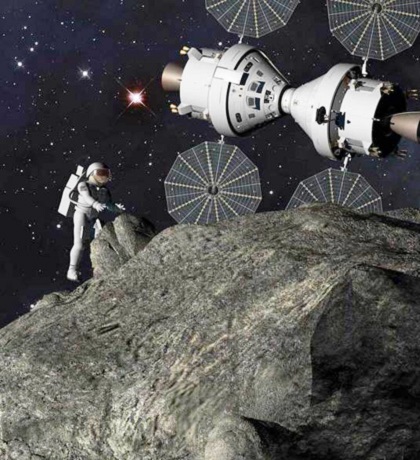 Artist’s illustration depicting a ‘Plymouth Rock’ asteroid mission with astronauts and NASA’s Lockheed Martin-built Orion spacecraft, designed specifically for deep space missions
Artist’s illustration depicting a ‘Plymouth Rock’ asteroid mission with astronauts and NASA’s Lockheed Martin-built Orion spacecraft, designed specifically for deep space missions
NASA exchanged samples with the Soviet Union, helping to deplete the very limited quantity of samples (approximately 300 grams) returned from the three separate robotic Luna missions. Finally, the United States government has vigorously prosecuted any individual thought to have obtained any lunar samples.
Geostationary orbit has become its own economy, and parties involved in this sector have the full expectation that they will receive the benefits of the bargains they strike
Based on any definition of ‘ownership’, the United States owns the Apollo lunar samples. Based on the 30 years of ‘open and obvious’ dominion and control exercised over the Apollo lunar samples, it is clear that under customary international law, portions of a celestial body can be subject to ownership if they are removed from that celestial body.
It is also possible to ‘own’ places in space. The Satellite Industry Association (SIA) has estimated that in 2013 (the last data collected), the total global satellite industry revenues were US$195.2 billion. [16] Companies manage to finance, build, launch, and operate satellites without a shred of real property ownership in the orbital slots into which they launch.
Use of geostationary orbit is governed by the International Telecommunications Union (ITU), governed by a set of principles similar to those espoused in the Outer Space Treaty. The International Telecommunications Convention, for instance, prohibits the outright ownership of frequencies or orbital locations.
The efficiency or equity of ITU orbital allocations are not the focus of this discussion. What is critical is the fact that a segment of space has been allocated, and bought and sold as a commodity. Both satellites themselves, and even orbital locations, have been swapped, sold, leased, and otherwise hypothecated.
In other words, the geostationary orbit has become its own economy, and parties involved in this sector have the full expectation that they will receive the benefits of the bargains they strike, even without any real property rights.
These examples, combined with a proper reading of the space treaties, demonstrate that domestic legislation such as passed by the United States and contemplated by Luxembourg are, in fact, entirely consistent with international space law and practice.
Unfinished business
While extracting resources from celestial bodies may be fundamentally legal under international space law, other provisions of the OST must be complied with, and sadly, the US legislation ignores both. First, Article VI of the OST states in part:
‘States Parties to the Treaty shall bear international responsibility for national activities in outer space, including the moon and other celestial bodies, whether such activities are carried on by governmental agencies or by non-governmental entities, and for assuring that national activities are carried out in conformity with the provisions set forth in the present Treaty. The activities of non-governmental entities in outer space, including the moon and other celestial bodies, shall require authorisation and continuing supervision by the appropriate State Party to the Treaty.’ (emphasis added)
The US legislation fails to deal with these requirements. Worse, there is no current statutory or regulatory mechanism by which the United State government can authorise and supervise asteroid mining. You can’t simply walk into the US Department of Space Mining and ask for a license to mine an asteroid.
The Federal Aviation Administration’s (FAA) Office of Commercial Space (AST) does provide ‘payload reviews’ for objects to be launched into space by US carriers but FAA’s jurisdiction is limited to ‘launch’ and ‘re-entry’ and only with respect to whether such payloads pose a safety risk to the uninvolved public. There is no ‘on-orbit’ regulatory jurisdiction under US law. [17]
FAA/AST, in a letter issued late in 2014, stated that it hoped to ‘leverage’ its statutory authority to include payload reviews for a lunar encampment, for example, but such rewriting of statutes by regulatory agencies has been struck down by US courts as ultra vires (beyond their powers), [18] and certainly would not be defensible as meeting the Article VI obligations of the United States under international space law.
The second area the US legislation failed to address is the concept of ‘non-interference’ contained in the OST, Article IX.
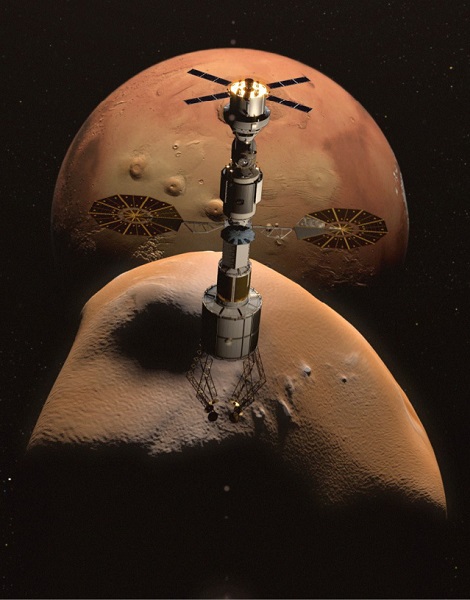 NASA’s Deep Space Exploration Vehicle on a future mission to Mars
NASA’s Deep Space Exploration Vehicle on a future mission to Mars
A State Party to the Treaty which has reason to believe that an activity or experiment planned by another State Party in outer space, including the moon and other celestial bodies, would cause potentially harmful interference with activities in the peaceful exploration and use of outer space, including the moon and other celestial bodies, may request consultation concerning the activity or experiment.
Contrary to what some commentators claim, there is no ‘loophole’ that allows individuals to claim ownership of celestial bodies
If a party is already at an asteroid and mining it, can a second party come along and mine it as well? Who will decide whether there will be ‘interference’ when, as stated before at least in the United States, no federal agency has been delegated that jurisdiction by statute? Without further legislation, those decisions will have to come from the US Department of State, which is ill-equipped to effectively pick winners and losers in space mining.
It will be fascinating to see how Luxembourg responds to the US statute. Will it follow suit and adopt a similar (and equally incomplete) regime, or will it address the Article VI and Article IX issues that must be tackled before actual mining operations can commence?
Some government, somewhere, will have to take the lead, and the country that addresses these issues correctly may well become the ‘flag of convenience’ country for entities wishing to expand the economy into the High Frontier.
References
1 See, e.g., Verne, J: Hector Servadac, Voyages et Adventures a traverse le Monde Solaire (“Off on a Comet”), 1877.
2 See, e.g., Tsiolkovsky, K.E.: The Exploration of Cosmic Space by Means of Rocket Propulsion, Moscow, 1903. The first in-depth analysis of extraterrestrial material utilization was done in the 1970s, led by Dr. Gerard K. O’Neill. See O’Neill, G.K.: The Colonization of Space, Physics Today, 27(9):32-40 (September, 1974), available at http://www.nss.org/settlement/physicstoday.htm; O’Neill, G.K.: The High Frontier, Morrow, New York, 1976; Johnson, RD., Holbrow, c., ed.: Space Settlements: A Design Study, NASA SP-413, 1977, available online at: http://settlement.arc.nasa.gov/75SummerStudy/Table_of_Contents1.html.
3 See http://www.gouvernement.lu/5653386.
4 Luxembourg already hosts one of the world’s largest space satellite operators, SES, S.A., due in part to its relatively benign corporate tax system.
5 See, e.g., HALEY, SPACE LAW AND GOVERNMENT at 10 (1963) at 10 (“Whatever the ultimate products of space exploration and occupation may prove to be, man in his present state of civilization will in large measure determine whether they will be beneficial or nefarious. He will do so by the development of or the failure to develop a body of law which will govern his activities in space.”)
6 See id. at 9, 154; H.G. Darwin, The Outer Space Treaty, 42 B.Y.I.L. 278 (1967).
7 Treaty on Principles Governing the Activities of States in the Exploration and Use of Outer Space Including the Moon and Other Celestial Bodies, Jan. 27, 1967, 18 U.S.T. 2410, T.I.A.S. No. 6347, 610 U.N.T.S. 205 (entered into force Oct. 10, 1967).
8 See, e.g., S. Gorove, Interpreting Article II of the Outer Space Treaty, 37 FORDHAM L. REV. 349, 351 (1969).
9 See, Darwin, supra n. 8; E. Husby, Sovereignty and Property Rights in Outer Space, 3 D.C.L. J. INT’L L & PRAC. 359 (1994).
10 We will not discuss the Moon Treaty, as so few countries have ratified it that can be deemed to be a failed treaty. Agreement Governing the Activities of States on the Moon and Other Celestial Bodies, Dec. 5, 1979, 1363 U.N.T.S. 3, (entered into force Jul. 11, 1984).
11 Outer Space Treaty, Article I.
12 Id. at Article IV.
13 Id. at Article IX.
14 Id. at Article VIII.
15 See http://www-curator.jsc.nasa.gov/lunar/sampreq/LunarAllocHndbk-JSC06090_RevF_2012.pdf (Lunar Sample Allocation Guidebook), p. 1 (emphasis added).
16 http://www.sia.org/wp-content/uploads/2014/05/SIA_2014_SSIR.pdf.
17 51 U.S.C. § 50904(a).
18 See Utility Air Regulatory Group v. EPA, 573 U.S. _ (2014).





